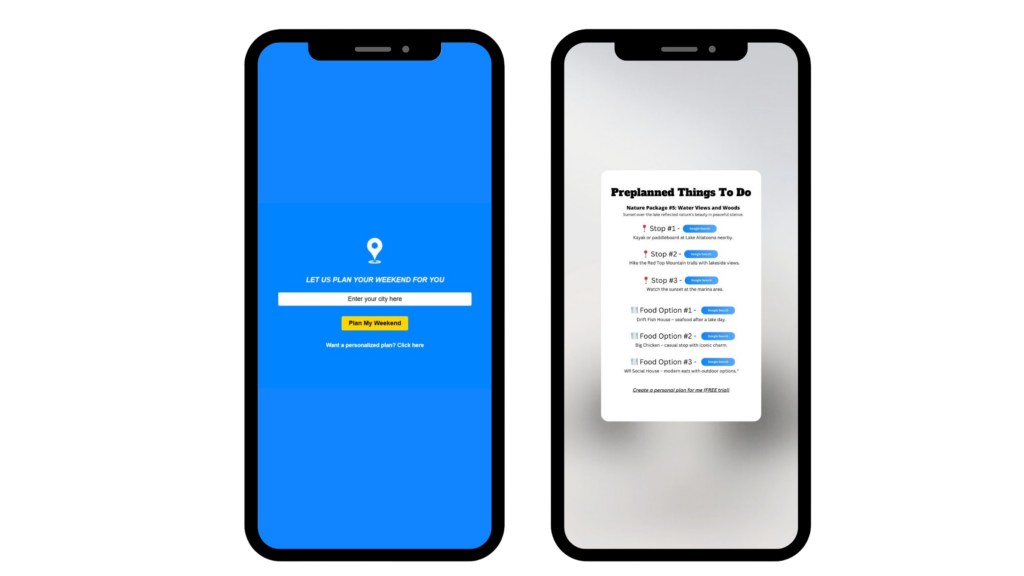
Key Takeaways:
-
Sofia blends ancient history, vibrant modern culture, and stunning nature, offering something to explore year-round.
-
Visitors can discover historical landmarks, colorful festivals, nearby hiking trails, and relaxing parks.
-
The city’s compact size and rich heritage make it ideal for both short getaways and extended visits in any season.
Sofia, the capital of Bulgaria, sits at the crossroads of Europe and Asia, blending centuries of history with a growing modern energy. Originally founded by the Thracians and later influenced by Roman, Byzantine, and Ottoman empires, Sofia’s diverse past is reflected in its architecture, museums, and cultural traditions. Nestled at the foot of Vitosha Mountain, the city offers a unique combination of urban life and natural beauty. With its mild summers, snowy winters, and vibrant cultural calendar, Sofia welcomes visitors throughout the year to experience its rich history, food scene, and warm hospitality.
Table of Contents
-
Visit Alexander Nevsky Cathedral
-
Hike Vitosha Mountain
-
Explore Boyana Church
-
Stroll Down Vitosha Boulevard
-
Discover the National Palace of Culture (NDK)
-
Tour the National History Museum
-
Relax at Borisova Gradina Park
-
Visit the Sofia Central Mineral Baths
-
Attend Sofia International Film Festival
-
Explore the Ivan Vazov National Theatre
1. Visit Alexander Nevsky Cathedral
The Alexander Nevsky Cathedral stands as Sofia’s most recognizable and iconic landmark. Built in the early 20th century, the cathedral honors Russian soldiers who helped liberate Bulgaria from Ottoman rule. Its grand golden domes, detailed mosaics, and ornate interiors reflect a blend of Neo-Byzantine architecture and Orthodox Christian tradition. Inside, visitors are captivated by the stunning chandeliers, frescoes, and peaceful atmosphere.
The square surrounding the cathedral is equally picturesque, often filled with local artisans selling souvenirs and artwork. The cathedral is open to visitors year-round, with special religious services held on Orthodox holidays. It serves as both a spiritual center and a symbol of Bulgaria’s national identity. A visit to Alexander Nevsky Cathedral is a must for anyone exploring Sofia’s rich history and cultural heart.
2. Hike Vitosha Mountain
Vitosha Mountain rises just outside the city, providing locals and tourists with easy access to nature year-round. In the warmer months, visitors can hike its numerous trails, enjoy panoramic city views, and explore the beautiful Boyana Waterfall. In winter, Vitosha transforms into a ski resort, offering slopes suitable for both beginners and experienced skiers. The mountain’s accessibility makes it a favorite weekend escape for Sofia residents.
Cable cars and chairlifts make reaching the higher elevations quick and scenic, while several mountain huts offer food and rest stops along the trails. The combination of fresh air, beautiful forests, and wildlife spotting makes Vitosha a great destination for outdoor lovers. Its close proximity to the city allows visitors to enjoy both urban and mountain experiences in the same day. Vitosha is one of Sofia’s greatest natural assets.
3. Explore Boyana Church
Boyana Church, a UNESCO World Heritage Site, offers visitors a glimpse into medieval Bulgarian art and history. Dating back to the 10th century, the church is famous for its remarkably preserved frescoes painted in 1259. These early Renaissance-style frescoes depict vivid religious scenes and realistic portraits of local nobility, showcasing Bulgaria’s advanced artistry during the Middle Ages. The small church sits quietly at the foot of Vitosha Mountain, surrounded by peaceful gardens.
Only a limited number of visitors are allowed inside at a time to preserve the delicate paintings, making reservations recommended. Knowledgeable guides provide valuable insights into the church’s significance and the techniques used by its medieval artists. Boyana Church offers a deeply moving and intimate cultural experience. It’s one of Sofia’s most treasured historical landmarks, perfect for history enthusiasts.
4. Stroll Down Vitosha Boulevard
Vitosha Boulevard serves as Sofia’s main pedestrian street, lined with cafes, shops, restaurants, and boutiques. The boulevard stretches from the Palace of Justice to South Park, offering a lively atmosphere day and night. Outdoor cafes provide the perfect setting for people-watching, while international brands and local designers offer a variety of shopping options. In the evenings, the street comes alive with buskers, musicians, and vibrant nightlife.
Seasonal decorations during winter and spring festivals add extra charm to the boulevard, making it feel festive year-round. Many of Sofia’s major landmarks are easily accessible from Vitosha Boulevard, making it a great starting point for city exploration. Whether you’re sipping coffee, dining al fresco, or browsing shops, Vitosha Boulevard provides a true taste of modern Sofia. It’s an essential stop for both first-time visitors and returning travelers.
5. Discover the National Palace of Culture (NDK)
The National Palace of Culture, known locally as NDK, stands as Bulgaria’s largest multifunctional conference and entertainment center. The massive modernist structure regularly hosts concerts, exhibitions, theater performances, and international conferences. Its spacious interior features multiple event halls, galleries, and meeting spaces, while the surrounding park is perfect for leisurely walks. The building’s bold design contrasts with Sofia’s older architecture, representing Bulgaria’s modern cultural ambitions.
Throughout the year, the NDK hosts some of the city’s biggest cultural events, including book fairs, jazz festivals, and classical music concerts. Visitors can check the calendar for ongoing events or simply explore the open-air fountains and sculptures in front of the complex. The NDK offers both cultural depth and lively public space for Sofia’s residents and guests. It’s a cultural hub that adds dynamic energy to the city center.
6. Tour the National History Museum
The National History Museum in Sofia is one of the largest and most impressive museums in the Balkans. Housed in a former government residence at the foot of Vitosha Mountain, the museum showcases over 650,000 artifacts spanning Bulgaria’s rich history. Visitors can admire Thracian gold treasures, medieval armor, ancient pottery, and intricate religious icons. Each exhibit tells the story of Bulgaria’s evolution from prehistoric times through the modern era.
The museum’s spacious galleries and beautiful gardens provide a peaceful atmosphere for exploration. Informational panels and guided tours offer detailed context for the artifacts on display. The National History Museum is perfect for travelers who want a comprehensive overview of Bulgarian history and culture. It’s a highly educational and visually impressive stop during any visit to Sofia.
7. Relax at Borisova Gradina Park
Borisova Gradina Park is Sofia’s oldest and most beloved green space, offering locals and tourists a peaceful retreat in the heart of the city. The park features walking trails, sports fields, lakes, and historic monuments, making it a versatile spot for relaxation and recreation. In spring and summer, the park blooms with colorful flowers and shaded picnic areas, while autumn paints the trees in brilliant hues. Families, joggers, and cyclists gather daily to enjoy the fresh air and open space.
Children’s playgrounds, outdoor cafes, and seasonal events add extra appeal to the park’s laid-back charm. Landmarks such as the Soviet Army Monument and the Observatory add cultural interest for those wandering through the park. Borisova Gradina is the perfect place to unwind after sightseeing or to enjoy a leisurely afternoon. Its year-round beauty makes it a favorite destination for Sofia residents.
8. Visit the Sofia Central Mineral Baths
The Sofia Central Mineral Baths offer visitors a glimpse into the city’s centuries-old spa tradition. Although the historic bathhouse now operates as a museum, its stunning Neo-Byzantine architecture and decorative mosaics make it a must-visit landmark. Sofia’s mineral springs, known since Roman times, still bubble up outside, where locals fill bottles with mineral water. The bathhouse stands as a symbol of the city’s deep connection to healing waters.
The surrounding square, with its fountains and gardens, provides a relaxing place to sit and enjoy the atmosphere. Nearby, visitors can also explore the Sofia History Museum, located inside the bathhouse building. The Sofia Central Mineral Baths blend history, architecture, and local tradition in one spot. It’s a unique window into a cultural practice that has defined the city for centuries.
9. Attend Sofia International Film Festival
The Sofia International Film Festival, held each March, is one of Eastern Europe’s most important cultural events. Filmmakers, actors, and cinema lovers from around the world gather to screen new films, documentaries, and independent productions. Screenings take place at venues throughout the city, offering both international and Bulgarian films with subtitles. The festival creates a vibrant artistic energy that draws visitors well beyond Bulgaria’s borders.
In addition to screenings, the festival includes workshops, director Q&A sessions, and networking events for industry professionals. For casual visitors, it’s a chance to enjoy world-class cinema in an intimate setting. The Sofia International Film Festival showcases the city’s thriving creative scene and growing reputation in the global film community. It’s one of the best times of year to experience Sofia’s modern cultural pulse.
10. Explore the Ivan Vazov National Theatre
The Ivan Vazov National Theatre stands as Sofia’s most prestigious performing arts venue and architectural gem. Built in 1907, the neoclassical building features grand columns, gilded interiors, and intricate frescoes, making it a visual masterpiece both inside and out. The theater hosts regular performances of classic and contemporary Bulgarian drama, opera, and ballet. Its central location in the city’s main garden adds to its timeless appeal.
Visitors can attend affordable evening performances or simply admire the illuminated facade at night. The theater square often serves as a social hub, with outdoor cafes and street performers entertaining crowds throughout the year. Ivan Vazov National Theatre represents the heart of Sofia’s cultural life. It’s a must-see attraction that beautifully blends history, art, and everyday urban life.
What to do if you have kids?
Sofia offers many family-friendly attractions for kids to enjoy year-round. Children can explore Borisova Gradina Park’s playgrounds, ride the cable car up Vitosha Mountain, or visit the Sofia Zoo. The interactive exhibits at the National Museum of Natural History also appeal to younger visitors. With open spaces, gentle hikes, and cultural sites that welcome families, Sofia makes for an enjoyable trip with children in any season.
Where can i find free events in Sofia Bulgaria taking place this weekend?
The easiest way to discover free and affordable events happening in Sofia is by using our event discovery tool at https://planmyweekend.ai. You can browse local festivals, outdoor concerts, public markets, cultural performances, and family-friendly activities happening this weekend. The tool helps you easily plan your trip and uncover unique experiences without extra cost.
Final thoughts
Sofia offers a perfect combination of history, culture, nature, and modern energy that makes it a wonderful year-round destination. From ancient churches and museums to vibrant pedestrian boulevards and mountain hikes, the city delivers something for every traveler. Sofia’s friendly atmosphere, rich heritage, and accessible size make it both easy to explore and deeply rewarding. Whether you’re here for a weekend or an extended stay, Sofia promises a travel experience filled with memorable sights, flavors, and discoveries.
Author: Dejon Brooks
Dejon Brooks is an entrepreneur who founded Trend Watchers with his life savings. Aged 24, Dejon has turned Trend Watchers into a successful business. After reaching over 150M+ people on his personal accounts, he now spends his time growing Planmyweekend.ai


